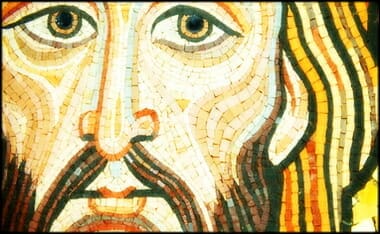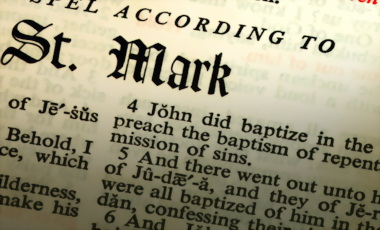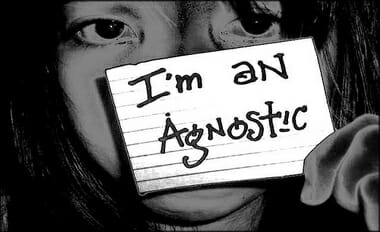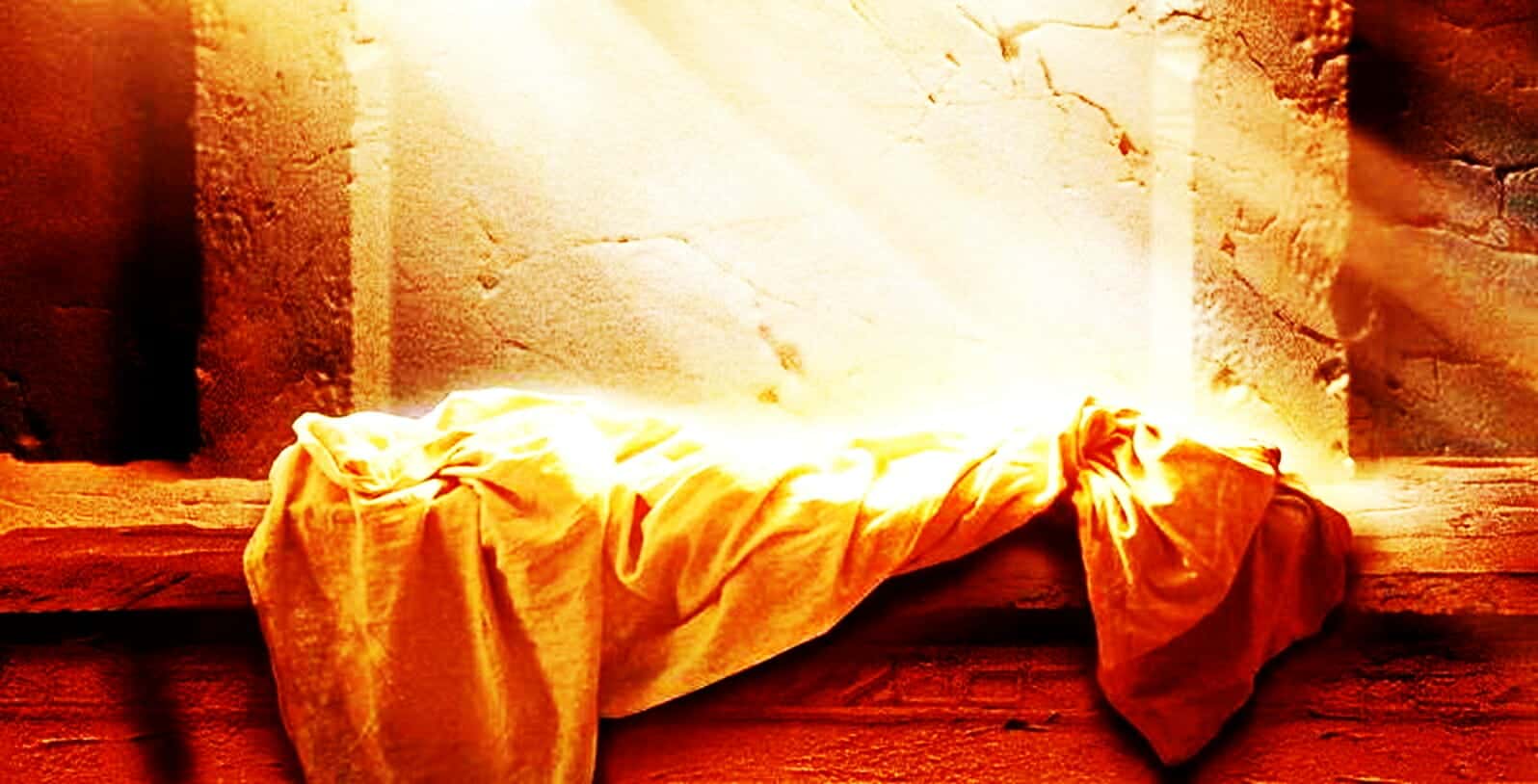Ehrman has asserted, “If we have very few early copies—in fact, scarcely any—how can we know that the text was not changed significantly before the New Testament began to be reproduced in such large quantities?”38 I am not sure what large quantities he is speaking about, since there are more MSS from the third century than there are from the fourth or fifth century.39
But how can we know? It is a legitimate question. There is a way to be relatively confident that the text of the fourth century looked remarkably like the earliest form of the text. P75 has large portions of Luke and John in it—and nothing else. Codex B has most of the NT in it. If B and P75 are very close to each other yet B often has the more primitive reading, we can extrapolate that the text of B is pretty decent for the rest of the NT. When it agrees with a MS such as Codex Sinaiticus, which it usually does, that combined reading almost surely goes back to a common archetype from deep in the second century.40
Nevertheless, Ehrman has carefully and ably described the transmission of the text. He has detailed how the winners succeeded in conquering all with their views and emerged as the group we might call “orthodox.” What he has said is fairly accurate overall. The only problem is that his is the right analysis but for the wrong religion. Ehrman’s basic argument about theological motives describes Islam far more than Christianity. Recent work on the transmissional history of both the NT and the Qur’an shows this clearly. Consider the following points:
1. Within just a few decades of the writing of the Qur’an, it underwent a strongly controlled, heavy-handed editing, geared toward “orthodoxy” that weeded out variants that did not conform.
But the NT, as even Ehrman argues, did not suffer this sort of control early on. Instead, Ehrman has often suggested that the earliest decades were marked by free, even wild copying.41
2. Calif Uthman was in charge of the earliest segment of this heavy-handed editing of the Qur’an. He systematically gathered up any nonconforming MSS and destroyed them. The originals were destroyed as well.42 Uthman then claimed that his “canonical” text was the exact equivalent of the autographs.
There is no real evidence that inexact copies of the NT were destroyed by ecclesiastical authorities.43 Indeed, there is evidence that just the opposite took place: defective or deteriorating copies might be placed in a jar or storage room but not destroyed.44
3. The closest we come to heavy-handed control for NT MSS did not occur until at least the ninth century, long after the major Christological disputes had ended.45 Even then, we do not see defective MSS getting destroyed.
4. One cannot have it both ways; there cannot be wild copying by untrained scribes and a proto-orthodox conspiracy simultaneously producing the same variants. Conspiracy implies control, and wild copying is anything but controlled.
On the one hand, there was uncontrolled copying of MSS in the earliest period, but this was largely restricted to the Western text form.46 On the other hand, there was a strand of early copying that may appear to be controlled. This is the Alexandrian family of MSS. Yet the reason that MSS of this text form look so much like each other is largely because they were in a relatively pure line of transmission.47 There was no conspiracy, just good practices.
5. The reason why Islam has Qur’an MSS that so closely resemble each other is precisely because this was official dogma, there was overzealous control in the copying of the MSS, and there were severe repercussions to any who erred significantly in their scribal duties. All MSS ultimately derived from a single copy—a copy that was not identical to the original text.48
Contrast this with the NT: from the earliest times, the NT was translated into a multitude of languages.49 The transmission of the text was a growing, living thing, not constrained by ecclesiastical controls until long after Christianity became legalized. Even then, we know of nothing like what we see in Islam: scribes not only made plenty of mistakes, but they even complained in the margins of their manuscripts about the weather, the length of the MS they were copying, the clogging of the ink, and so on.50 This sort of living, hands-on, messy relationship of the scribes to their holy scriptures is unheard of in Islam. In short, the Qur’an copying practices were more related to apologetics, while the NT practices were more related to life.
6. Further, ever since canon was a term meaningfully applied to the NT, there was never a sense that only the Greek MSS were Scripture. To be sure, the Reformation sparked a return to the original languages of the Bible, but the reason was not only purity of the text but clarity in the proclamation of the message. It is no accident that the Reformers were the catalyst for the great European translations of the Bible—translations into the language of the people that could be considered the very Word of God by the average layman. By way of contrast, the only true Qur’an is the Arabic Qur’an. All translations are officially suspect. Thus what Ehrman is describing is right on target but for the wrong religion. He is describing what has occurred in Islam, not in Christianity.
7. What Westcott said over a century ago is relevant to this discussion:
When the Caliph Othman fixed a text of the Koran and destroyed all the old copies which differed from his standard, he provided for the uniformity of subsequent manuscripts at the cost of their historical foundation. A classical text which rests finally on a single archetype is that which is open to the most serious suspicions.51
What we see in the NT copies is absolutely nothing like this. Ehrman tries to make a case for significant theological alterations to the text of the NT by a group that did not have control over the text from the beginning, but the historical ingredients for his hypothesis are missing. It is like trying to bake a cake with romaine lettuce and ranch dressing.
As Small points out,
The original NT text (the autographic text-form in Epp’s categories) has been kept remarkably well, and one form of the Qur’an text, a strongly edited one (a canonical text-form in Epp’s words), has been preserved remarkably well. This Qur’anic text form (the one attributed to Uthman though probably a little later—ca. 700 AD) preserves authentic material, but not in the forms in which it was originally used or in the complete collection assembled in writing or orally during Muhammad’s lifetime. Instead, it is a very selective, heavily edited text. In contrast, the NT is not really the product of an official process of intentional editing and so preserves more of the original text within the extant manuscripts. This can be said just on the basis of Islamic tradition concerning the collections attributed to have been made by the companions of Muhammad. In the twenty years after Muhammad’s death until Uthman’s project to standardize the text, these versions were used extensively in other parts of the growing Islamic empire, apparently as authoritative scripture. Some of these are reported to have been in use into the 900’s AD until they were finally suppressed around 934. My research in the manuscripts also demonstrates that the majority of the earliest manuscripts contain this edited text, with the handful of palimpsests pointing to other textual traditions that were successfully suppressed. These palimpsests contain the same variety of textual variants that one can see between the Western and Alexandrian text-types in the NT tradition—showing that there was a period when the Qur’an text was more fluid than the majority of manuscripts and Islamic dogma would lead one to believe. Muslims assume and state that this Uthmanic text was the original text, though even their traditions go against the view. It contains original material, but the original form of that material cannot be reconstructed because Uthman destroyed the autographs and had his authoritative version written in a defective script which allowed the growth of competing written versions and oral recitation systems. Their theological view of mechanical inspiration keeps them from adequately engaging with their own historical sources. What they have done instead is selectively choose reports that they can use to construct a straight line of “perfect” transmission while ignoring the facts which disagree with the theological construct they want to hold of an eternal book perfectly transmitted. I think Uthman’s version does probably represent the main lines of Muhammad’s teaching, though for political reasons certain parts may have been left out. But we can’t tell for sure because the autographs were destroyed, not that they wore out in use. And the main point to get to in all of this is still that the NT and the Qur’an teach very different things. Also, for whatever integrity one wants to grant to the transmission of the Qur’an, the NT needs to be regarded as having more integrity in its transmission process since there was not such an official editing process after the books were written. In light of all of this, I think Bart Ehrman’s arguments are much more appropriate for the Qur’an because for it there can be demonstrated an official program of textual standardization which was maintained over three centuries, and in some respects to this day.52
Concerning conforming the text to the Medieval standard, though there is a general parallel to this situation to the Qur’an’s, I see it having a fundamental difference, that while the changes to the NT were gradual, relatively late in the history of transmission, and primarily for liturgical reasons and to improve the style, the Qur’an’s form of the consonantal text was determined and maintained from very early on (within 30-70 years after Muhammad’s death) for reasons which had a large ideological/dogmatic component at the outset, and then that form was further shaped and developed with diacritics and vowels to maintain and serve various agendas during the next 200 years until the Sunnis came out on top politically in the 900’s and were able to canonize their version of the text.53
In another respect, when Ehrman discusses whether God has preserved the text of the NT, he places on the NT transmissional process some rather unrealistic demands—demands that Islam traditionally claims for itself with respect to the Qur’an but that no bona fide Christian scholar would ever claim was true of the NT MSS. As is well known, most Muslims claim that the Qur’an has been transmitted perfectly, that all copies are exactly alike. This is what Ehrman demands of the NT text if God has inspired it. Methodologically, he did not abandon the evangelical faith; he abandoned a faith that in its biblio-logical constructs is what most Muslims claim for their sacred text. Or as C. S. Lewis put it,
The moment [the miracle] enters [nature’s] realm, it obeys all her laws. Miraculous wine will intoxicate, miraculous conception will lead to pregnancy, inspired books will suffer all the ordinary processes of textual corruption, miraculous bread will be digested.54
To sum up the evidence on the number of variants, there are a lot of variants because there are a lot of manuscripts. Even in the early centuries, the text of the NT is found in a sufficient number of MSS, versions, and writings of the church fathers to give us the essentials of the original text.
Footnotes
38) Lost Christianities, 219.
39) The next line, however, suggests that he is speaking about medieval MSS: “Most surviving copies were made during the Middle Ages, many of them a thousand years after Paul and his companions had died” (ibid.). The juxtaposition of this sentence with the one questioning whether we can know how significant the changes were prior to this time is, at best, misleading. Ehrman would acknowledge, as would most textual critics, that the MSS produced in the Middle Ages are hardly our most reliable witnesses to the NT text and that we have several sufficient witnesses prior to that time on which to reconstruct the wording of the earliest form of the text.
40) Cf., e.g., Metzger and Ehrman, Text of the New Testament, 277-78, 312. Hort believed that when K and B agreed, their reading went back to a very ancient common ancestor. That it was not a near ancestor was demonstrated by the thousands of disagreements between these two manuscripts, suggesting that there were several intermediaries between the common ancestor and these two majuscule documents (B. F. Westcott and F. J. A. Hort, The New Testament in the Original Greek, vol. 2, Introduction [and] Appendix [Cambridge: Macmillan, 1882], 212-50). Cf. also Metzger and Ehrman, The Text of the New Testament, 312: “With the discovery . .. of T66 and P75, both dating from about the end of the second or the beginning of the third century, proof became now available that Hort’s Neutral text goes back to an archetype that must be put early in the second century.”
41) Cf., e.g., Ehrman, Misquoting Jesus, 124. I will discuss the nature of the early copying soon enough, but for now I simply point out that according to Ehrman, there was extensive uncontrolled copying of the NT in the earliest period.
42) Ehrman opines that perhaps the NT autographs were destroyed. Not only is there no evidence that this was the case, there is second-century evidence that the autographs would have been revered.
43) See nn. 34 and 44 for discussion.
44) Colin H. Roberts (Manuscript, Society, and Belief in Early Christian Egypt [London: Oxford University Press, 1979], 6-8) gives ample evidence that early Christians took over the practice of Jews to “dispose of defective, worn-out, or heretical scriptures by burying them near a cemetery, not to preserve them but because anything that might contain the name of God might not be destroyed” (ibid., 7). He was dealing with the earliest period of Christian copying but noted that the Nag Hammadi MSS (“outside our period”) seem to fit this pattern as well. In addition, he cited the Dead Sea Scrolls, the Chester Beatty papyri, as well as several other examples. In more modern times, it is noteworthy to mention the New Finds manuscripts at St. Catherine’s Monastery of Mt. Sinai. Discovered in 1975, quite by accident, was a geniza that housed about 1,200 manuscripts and 50,000 fragments of manuscripts. The latest date of any of the MSS was from the eighteenth century; the earliest was the fourth century (about two dozen leaves or fragments from Codex Sinaiticus). Among the less orthodox MSS were the Protevangelium of James and the Assumption of the Virgin. When I visited the monastery in September 2002, Archbishop Damianos expressed surprise to me that the Protevan-gelium was among the New Finds manuscripts. I discovered the Assumption of the Virgin inside the Protevangelium, occupying a new quire.
What the New Finds illustrate is that the practice of burying MSS at Mt. Sinai was taking place after the eighteenth century and sufficiently prior to modern times to have been forgotten by the monks. After Tischendorf’s last visit in 1859, the monastery became increasingly flooded with visitors. This suggests that the geniza was filled prior to this time. And the fact that leaves from Sinaiticus were buried there—both from the Pentateuch and from the Apostolic Fathers (i.e., the outer leaves of the codex, which would be most prone to be loosed from the book)—may imply that Tischendorf was mistaken when he said that the monks were burning leaves of this codex. For our purposes, it is enough to note that the normative practice of ancient Christians, even perhaps to modern times, was to bury or hide sacred texts rather than destroy them.
45) T. J. Ralston (“The Majority Text and Byzantine Texttype Development: The Significance of a Non-Parametric Method of Data Analysis for the Exploration of Manuscript Traditions” [PhD diss., Dallas Seminary, 1994]) notes (in agreement with von Soden’s assessment) that there was a large editorial push by at least one scriptorium in the ninth and eleventh centuries, resulting in carefully produced copies that were very close to each other.
46) It is not entirely insignificant that Ehrman’s preferred reading in several places that seem to impact Christology is found in the Western text (e.g., Luke 3.22; John 20.28). The burden of proof certainly rests with the one who would argue that such a textual tradition has the original wording when the carefully copied tradition of Alexandria does not. He admits that the Western text is less likely to preserve the best reading when it lacks support of the Alexandrian witnesses (Misquoting Jesus, 131). I do agree with Ehrman in at least one Western reading, however. But ὀργισθείς in Mark 1.41 has compelling internal evidence in its favor.
47) Ehrman, Misquoting Jesus, 131.
48) This is not at all what the NT transmission was like. See the following discussion of the work of Uthman in canonizing the Qur’an by starting with his own MS as the progenitor of all that would follow. Ehrman speculates, without a shred of evidence, that this same phenomenon occurred for NT books: “[W]hat if only one of the copies served as the copy from which all subsequent copies were made…?” (Misquoting Jesus, 59).
49) Keith Small, a scholar in the United Kingdom who has recently completed his doctoral thesis on a comparison of the NT textual transmission and the Qur’an textual transmission (“Mapping a New Country: Textual Criticism and Qur’an Manuscripts” [London School of Theology, 2008]), noted in an email on March 25, 2008, “There was not a program of translation to spread Islam through having people read the Qur’an, like there was with the Christian Scriptures. Though one early jurist, Abu Hanifah (d. AD 767), did rule that a person could recite a vernacular translation in their prayers, he also is said to have retracted that ruling. The earliest extant translation I know of is one done into Persian about AD 956 (Ekmeleddin Ihsanoglu, World Bibliography of Translations of the Meanings of the Holy Qur’an, Printed Translations 1515-1980 [Istanbul: Research Centre for Islamic History, Art and Culture], xxiii).”
50) See Metzger and Ehrman, Text of the New Testament, 29, for illustrations. Having this sort of marginal note in the Qur’an is unheard of. But some of the marginal notes in the NT MSS are rather impious, showing that the copying was meant more for the masses than for apologetic reasons.
51) Brooke Foss Westcott, Some Lessons of the Revised Version of the New Testament, 2nd ed. (London: Hodder and Stoughton, 1897), 8-9 (italics added). Credit is due to Keith Small for pointing this reference out to me.
52) Email from Keith Small, Mar. 11 2008,
53) Email from Keith Small, Dec. 30, 2007. For an excellent survey on the transmission of the Qur’an, see now Keith E. Small, Textual Criticism and Qur’an Manuscripts (Idaho Falls, Idaho: Lexingon, 2011).
54) C. S. Lewis, Miracles: A Preliminary Study, 1st Touchstone ed. (New York: Touchstone, 1996) 95 (italics added).





